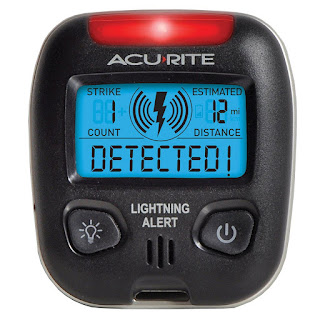Posts Tagged ‘Weather’
 Yet in Quarantine, Life Blossoms!
Yet in Quarantine, Life Blossoms!
About a month ago, I asked,
“What is going on with you during this challenging situation?” and, “How do you use amateur radio, now that we are all stuck at home? Are you using ham radio more, now? Less?“
I am moved to say, “Thank you, to each of you who commented and even those who made a video response. I sure appreciate it!“
During that video blog (or, Vlog), back a month ago (link: Chat From a Quarantined Software Engineer – Welfare Check!), I mentioned my need for dental surgery.
I did have to have the tooth removed. It was completely split down the middle (top to bottom), down to the root. There was no justifiable way to save the tooth.
I now am missing two bottom back-most teeth, and one bottom, back-most tooth. I can report that I have healed up nicely. I am starting to enjoy a hamburger or two.
Through all of this, I’ve still been working. Also, I’ve been involved with a LOT more ham radio–especially with Morse code activities.
How has the last month treated you? After watching this new video (below), please leave a comment or two, or three; let hear from you, okay?
More than anything, please leave a comment to let me know how you are doing. I hope to hear from you.
Here’s the video:
73 de NW7US dit dit
 If you don’t like the weather in NJ
If you don’t like the weather in NJ
I've been keeping an eye on the long range weather forecast via WeatherUnderground for this coming Saturday - FYBO day.
A couple of days ago, they were calling for a wet weekend. This morning, they were calling for an ice storm in the morning with some showers in the afternoon after a warm up.
NOW it's supposed to be "just" a cloudy day with just a chance of showers. Meanwhile, last night on the news, the local weather prognosticator was calling for a possible Nor'Easter this weekend. It's enough to make your head spin!
 Another D Day Special Event
Another D Day Special Event
 Travel Footage: 3Y0Z Antarctic Bouvet Island DXpedition 2018 Expedition (by EY8MM)
Travel Footage: 3Y0Z Antarctic Bouvet Island DXpedition 2018 Expedition (by EY8MM)
Here is video footage of the journey to Antarctic Bouvet Island, made by the 3Y0Z amateur ham radio team. This footage caught a few moments on the deck of M/V Betanzos.
As you can see in the last moments of this footage, the weather conditions contributed to the decision to abort the DXpedition, as it was far too dangerous to continue this expedition.
As reported by ARRL:
“Our captain has decided that it is in the best interest of safety and expediency to proceed directly to Capetown, South Africa, rather than Punta Arenas, Chile. We are now heading north to avoid the possibility of encountering ice. Currently, there is no ice in sight or on radar. In due time, we will head easterly toward Capetown. Our entire team is safe. Most are resting in their bunks and in good spirits. We will keep the amateur radio community and our families informed, as we continue our journey.”
In a huge disappointment for the DX community and the members of the 3Y0Z Bouvet Island team, the DXpedition’s leaders announced at 2000 UTC today (February 3) that a decision had been made to abort the DXpedition and head back to Chile.
“During the last 72 hours, we continued to experience the high winds, low clouds, fog and rough seas that have prevented helicopter operations since our arrival at Bouvet,” said an announcement on the 3Y0Z Bouvet Island website. “No improvement was predicted in the weather forecast for the next 4 days. Then, last night, an issue developed in one of the ship’s engines. This morning, the captain of the vessel declared it unsafe to continue with our project and aborted the DXpedition. We are now on our long voyage back to Punta Arenas. As you might imagine, the team is deeply disappointed, but safe. There is already talk about rescheduling the DXpedition.”
Bouvet Island currently is the third most-wanted DXCC entity, behind Kosovo and North Korea. The 3Y0Z DXpedition, comprised of top operators with considerable DXpedition experience, has been in the planning stages for 2 years and had attracted contributions from clubs and individuals around the world.
A dependency of Norway, Bouvet is a subantarctic island in the South Atlantic. The last Bouvet activation was 3Y0E, during a scientific expedition over the winter of 2007-2008.
Video Author: Nodir Tursun Zade, EY8MM
This copy is used BY PERMISSION from EY8MM, given in writing on 23 February 2018
 It’s been a long, long time.
It’s been a long, long time.
There are two of us in my department. Things were easier in Warren, as we both worked from the same (and only) building on campus. We staggered our lunch breaks so that one of us was always on duty. Here, at the new work QTH, we are split between two buildings, each one of us minding our own store, so to speak. Unless you master bi-location, you can't manage both buildings at the same time with one man.
That led towards a hiatus in lunchtime QRP operations as it just seemed not the greatest idea to spend so much time away from the desk. I know, it's time I'm entitled to (it's only an hour) and I really should get away from the desk to remain fresh in the afternoon.
So I decided to take advantage again, beginning this week.
I went out to the car yesterday and hooked up the KX3 to the Buddistick. I heard a lot of stations on 20 Meters, but got no answers to any of my calls. I know the equipment works, I figured it was just a bit of "rust" on my part. But, boy howdy, was it hot yesterday! It reached into the upper 80s (about 30C) here at lunchtime and since I was parked outside, it was hot like an oven in the car. It was a double negative experience - too hot and skunked on contacts.
Not one to be deterred, my little eye spied on something that I had forgotten. This campus has picnic tables! Many of the employees go out to eat outdoors on the nice days. There are plenty of tables, they are spaced widely enough apart where conversations cannot encroach on one another.
It dawned on me that this would be the perfect place to set up the KX3 and the magloop! Sure, I'd probably get some stares from the other lunchers, and maybe from some of the employees who take advantage of their lunch break to walk the perimeter of the campus - but what they heck? Right? It's not like I haven't been stared at before. It's not like people haven't come up to me to ask, "What is that?" before, so tossing self-consciousness into the wind, I decided to set up at one of the tables today.
I chose a table towards the end of the line of tables, the one with no umbrella. Sure, it would be a little hotter with no shade, but it's less than an hour and besides, there's be no metallic umbrella ribs to possibly interact with the magloop.
Before hunting for a QSO, I decided to call CQ for a bit on both 20 and 17 Meters. I really didn't expect anyone to answer, although there's no reason why anyone wouldn't. I just wanted to conduct a little Reverse Beacon Network experiment.
Experiment done, I went back to 20 Meters and found the "sweet spot" with the loop's tuning capacitor. (I was able to set up in under four minutes, by they way. Almost as fast as setting up the Buddistick on the car.) Tuning the KX3 around, there were a bunch of loud stations. Finally, I came upon GI4DOH, Rich in Northern Ireland. He had a strong signal and a great fist, so I gave him a call. He came back to me on the first shot! He was 559+ here in NJ, and I got a 559 in return.
According to his QRZ page, the loop that Rich is using is a receive only loop. This was not a loop to loop QSO.
After working Rich, I popped on up to 17 Meters. There I heard OE3DXA, Wern in Austria calling CQ. Again, loud signal, great fist, so I gave him a call. Just as with GI4DOH, I gave him a 599+ report but this time I got a 599 in return. Both QSOs were solid with no repeats asked for with regard to info, so I am assuming I was at or near Q5 copy. (Even if the 599 in return wasn't exactly accurate.)
It was time to pack it in, and I was satisfied with the two DX QSOs for the day. With regard to my Reverse Beacon Network experiment, this was where the loop was allowing my signal to be heard:
As for spectators, I did get one guy who stopped to ask, "What is that? And what are you doing?" I explained that it was Amateur Radio and an Amateur Radio antenna. In response, I got the (what seems to be standard) "People still do that?" question.
I went into "pitch" mode and explained that yes, Amateur Radio is alive and well, and that for a lot of people in the Caribbean right now it's the only way they can get word out to their families abroad, that they are OK after the hurricanes.
So it was a successful day, I'm happy and it looks like there might not be rain for the rest of the work week.
72 de Larry W2LJ
QRP - When you care to send the very least!
 ETH084 – Hurricane Harvey, Solar Eclipse, HamJam 2017 and More…
ETH084 – Hurricane Harvey, Solar Eclipse, HamJam 2017 and More…
In this episode, I am joined by Ian Kahn, KM4IK, as a guest co-host. Ian has been on my podcast before in episode 69 where we talked about PSK31 and in episode 74 where we talked about Field Day. I have really enjoyed having Ian on my show and was happy that he agreed to join me in this episode as a guest co-host.
We had a great conversation about many major things that have happened recently.
We start off talking about the major event hitting my home state of Texas and reeking major damage all along the Gulf Coast. Yea, I’m talking about Hurricane Harvey. I have several friends that are helping out right now down in the disaster area and more planning on deploying there soon.
We continue our discussion with last weeks major event, the “Great American Solar Eclipse”. We talk about our experience was, some things that we saw and was other hams around the country were doing, including the study that was performed by HamSci.
We went on to talk about how it never seems to fail how things always “come back into style”. Morse code is coming back to the Navy, HF is being taught to the national guard to use instead of relying totally on Satellite Phone communications and also how there is a push to get back into using Earth base navigation for ships at least as a back up to GPS.
We wrap up the episode by talking about HamJam 2017 in November. HamJam is a ham radio conference with three great speakers talking about three great topics. There are several really awesome raffle items.
 Arduino Projects for Amateur Radio with Glen Popiel – ETH072
Arduino Projects for Amateur Radio with Glen Popiel – ETH072

Do you want to get back to the original roots of Amateur Radio? Maybe you are a new ham and you have a DIY side? Maybe you just want to try something new? There are so many things that you can do with an Arduino that cost only $4 or so! Anything from a morse code keyer to a 40m QRP CW Radio and a whole lot in between. You can even do things with an Arduino that has nothing to do with amateur radio but you will find a use for.
In this episode with talk with Glen Popiel, KW5GP the author of the ARRL published books, Arduino for Ham Radio and his new book that just came out, More Arduino for Ham Radio. He is also the author of the ham mesh networking book, High Speed Multimedia for Amateur Radio.
We had a great conversation and it made me literally go to the ARRL website and buy his new Arduino book while we were recording! Check out the show notes of this episode to listen and to get more information about what we talked about. There are also links to his books that you can go to to buy one for yourself.















